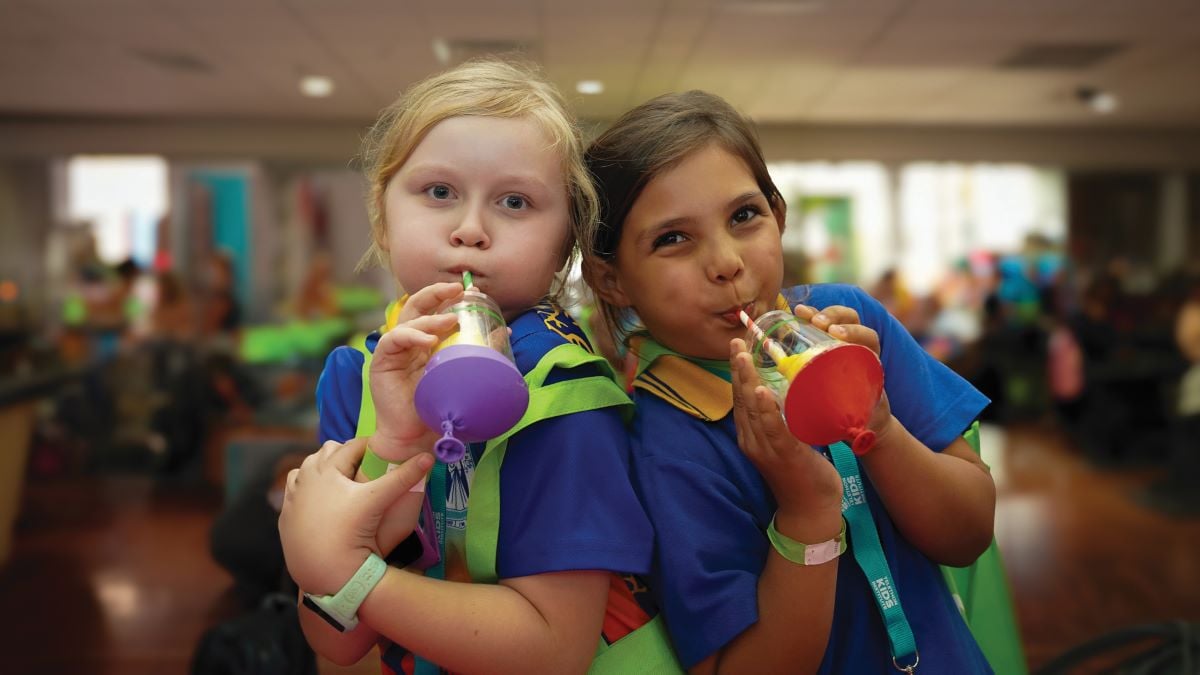Search

Find out what our communities had to say about the draft Statement on Consumers and Community Involvement in Health and Medical Research.
Research
Development of a universal aftercare model for people who have presented to the emergency department for a suicidal crisis in WAThe Mental Health Commission (MHC) of Western Australia has provided funding to The Kids Research Institute Australia to undertake exploratory research to inform a WA approach to aftercare.
Research
Measuring how a disease outbreak could spread in WANick Golding BSc DPhil Honorary Research Fellow Nick.Golding@thekids.org.au Honorary Research Fellow Professor Nick Golding is the UWA Chair in

News & Events
Four BrightSpark Fellowships awarded to early-career researchers at The KidsCongratulations to four outstanding early-career researchers from The Kids Research Institute Australia, who have been awarded BrightSpark Foundation fellowships and project funding for 2026.
Research
disaggregation: An R Package for Bayesian Spatial Disaggregation ModelingDisaggregation modeling, or downscaling, has become an important discipline in epidemiology. Surveillance data, aggregated over large regions, is becoming more common, leading to an increasing demand for modeling frameworks that can deal with this data to understand spatial patterns.
Research
Economic and social development along the urban–rural continuum: New opportunities to inform policyThe economic and social development of nations relies on their population having physical access to services and employment opportunities. For the vast majority of the 3.4 billion people living in rural areas, this largely depends on their access to urban centers of different sizes.
Research
WALLABY Pilot Survey: The Diversity of Ram Pressure Stripping of the Galactic HI Gas in the Hydra ClusterThis study uses H i image data from the Widefield ASKAP L-band Legacy All-sky Blind surveY (WALLABY) pilot survey with the Australian Square Kilometre Array Pathfinder (ASKAP) telescope, covering the Hydra cluster out to 2.5r 200. We present the projected phase-space distribution of H i-detected galaxies in Hydra, and identify that nearly two-thirds of the galaxies within 1.25r200 may be in the early stages of ram pressure stripping.

News & Events
Announcing our 2025 Premier’s Science Awards finalistsEight outstanding researchers from The Kids Research Institute Australia and the Institute-led Broome STEM Festival are finalists in the 2025 Premier’s Science Awards.
Research
Achieving universal electrification of rural healthcare facilities in sub-Saharan Africa with decentralized renewable energy technologiesA potential response to the COVID-19 pandemic in sub-Saharan Africa (SSA) with long-term benefits is to provide electricity for medical equipment in rural health centers and communities. This study identifies a large gap in the electrification of healthcare facilities in SSA, and it shows that decentralized photovoltaic systems can offer a clean, reliable, quick, and cost-effective solution.
Research
Global economic costs due to vivax malaria and the potential impact of its radical cure: A modelling studyAn estimated 14 million cases of Plasmodium vivax malaria were reported from Asia, Central and South America, and the Horn of Africa. The clinical burden of vivax malaria is largely driven by its ability to form dormant liver stages (hypnozoites) that can reactivate to cause recurrent episodes of malaria. Elimination of both the blood and liver stages of the parasites ("radical cure") is required to achieve a sustained clinical response and prevent ongoing transmission of the parasite.

News & Events
STEM festival is coming to Kalgoorlie this AugustFree Family-Friendly Science Fun During National Science Week 2025. Get ready for an awesome adventure into the world of Science, Technology, Engineering and Mathematics!
Research
Semi-field evaluation of the exposure-free mosquito electrocuting trap and BG-Sentinel trap as an alternative to the human landing catch for measuring the efficacy of transfluthrin emanators against Aedes aegyptiThe human landing catch (HLC) measures human exposure to mosquito bites and evaluates the efficacy of vector control tools. However, it may expose volunteers to potentially infected mosquitoes. The mosquito electrocuting trap (MET) and BG-Sentinel traps (BGS) represent alternative, exposure-free methods for sampling host-seeking mosquitoes. This study investigates whether these methods can be effectively used as alternatives to HLC for measuring the efficacy of transfluthrin emanator against Aedes aegypti.
Research
Impacts on Human Movement in Australian Cities Related to the COVID-19 PandemicNo studies have yet examined high-resolution shifts in the spatial patterns of human movement in Australia throughout 2020 and 2021, a period coincident with the repeated enactment and removal of varied governmental restrictions aimed at reducing community transmission of SARS-CoV-2. We compared overlapping timeseries of COVID-19 pandemic-related restrictions, epidemiological data on cases and vaccination rates, and high-resolution human movement data to characterize population-level responses to the pandemic in Australian cities.
Research
Socioeconomic, Demographic, and Environmental Factors May Inform Malaria Intervention Prioritization in Urban NigeriaUrban population growth in Nigeria may exceed the availability of affordable housing and basic services, resulting in living conditions conducive to vector breeding and heterogeneous malaria transmission. Understanding the link between community-level factors and urban malaria transmission informs targeted interventions.
